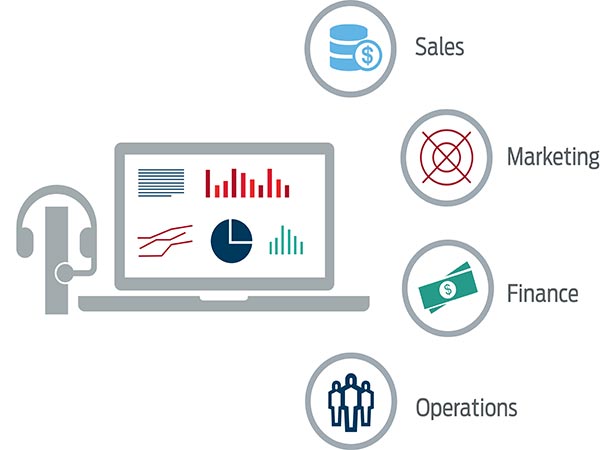AI in Customer Service: More than Just Chatbots
AI in Customer Service: More than Just Chatbots

When it comes to artificial intelligence (AI) in call centres, most people automatically think “chatbot.” But—while useful—chatbots alone can’t give organisations the insights they need to compete effectively and strategically. After all, chatbots can’t recognise indicators of customer dissatisfaction in time to rectify a situation and retain the customer. And they most certainly can’t discern between customers bluffing they’ll drop a service and those that actually will churn.
All in all—today’s forward-thinking businesses use AI to drive better customer experiences. Here’s how they make it happen.
Why Chatbots are the Face of Customer Service AI
With increasingly impatient and less loyal customers, businesses need to do everything they can to hold on to customers by improving their experience and expediting the resolution of their issues.
One key way to improve the customer experience is by improving the customer’s interactions with the call centre. After all, no one likes to wait on hold or repeat themselves when transferred from one agent to another. But merely throwing more agents at the problem doesn’t work: it’s expensive, it doesn’t scale and it doesn’t increase efficiencies.
That’s why so many call centres are deploying chatbots—intelligent, natural language virtual assistants that can recognise human speech and understand a caller’s intent without requiring the caller to speak in specific phrases. In fact, Oracle found that 80 percent of businesses already use or plan to use chatbots in their customer service by 2020.
Chatbots improve the customer experience by expediting monotonous and repetitive tasks, such as:
- requesting account balances;
- changing passwords;
- scheduling appointments; and
- troubleshooting minor issues.
Thanks to chatbots, customers no longer need to waste time waiting on the phone to speak with an agent to complete these simple actions. Instead, they can get what they need by using simple voice or text commands.
How AI for Customer Service Extends Beyond Chatbots
As we all know, if customers don’t receive the level of customer service they expect, they’ll promptly switch to another vendor to get what they need.
Chatbots might streamline the most basic of customers’ interactions with a brand, but they can’t provide the complex or holistic experience that keeps customers coming back for more and they can’t help predict what will happen in the future. There are, however, other applications of AI that can do just that.
It’s no surprise that Gartner estimates the number one use case for applying AI—about 70 percent of all use cases at the end of 2017—was related to customer service and call centres.
These more sophisticated applications of AI extend far beyond chatbots—they predict human behaviour in a way that empowers the organisation to take proactive measures to manage agent performance, improve customer engagement and enhance back-office operations, as well as gain deeper insights into the customer journey.
Let’s dive into how artificial intelligence is powering improved customer experience:
Why Machine Learning in Customer Service is the Future
While chatbots might be the face of modern customer service, machine learning is powering everything from behind the scenes.
Machine learning helps companies predict human behaviour—such as identifying dissatisfied customers who are at risk—and constantly gets “smarter,” learning from all of the new data that comes in. With machine learning, call centres can leverage call recordings, quality management scores, customer survey scores, Net Promoter Scores (NPS) and Voice of the Customer (VoC) data—as well as text, desktop, and speech analytics—to create mathematical approximations of both customer and agent behaviour.
Once machine learning has gathered and analysed the data, it can then use that information to predict the outcomes that most affect the contact centre and the enterprise. This type of discernment is incredibly valuable to businesses since many don’t recognise the signs of customer dissatisfaction until after customers are lost.
Here are 3 key ways machine learning is applied in call centres today:
1. Predictive NPS
Predictive NPS utilises machine learning to generate an NPS for every single customer, regardless of whether they’ve taken a survey or otherwise provided feedback. It does this by assessing both completed customer surveys and speech phonetics data in order to pinpoint the characteristics of customer interactions that most impact satisfaction scores.
Predictive NPS can dig into:
- the amount of time between the first reply and subsequent response times
- whether text responses with similar wording have resulted in satisfied customers
- how much effort the agent puts into resolving the customer’s issue.
The technology then uses this information to generate a predictive NPS for all customers—it essentially tells a business whether a customer interaction will lead to a positive or negative customer experience, i.e. “when calls come in that look like this, here’s what will happen.”
Think about how powerful this data can be for a contact centre. If you gather post-call surveys from only two percent of your customers, using predictive NPS you then can generate an NPS for the other 98 percent of customer interactions as well.
This comprehensiveness lets businesses make more informed decisions on things like customer outreach or agent evaluations because they’re basing those decisions on 100 percent of customer data. It also enables them to easily deliver different messaging to promoters versus detractors (or those who are neutral), for maximum impact.
2. Predictive Evaluation
Predictive evaluation uses machine learning to drive targeted quality management, working in a manner similar to predictive NPS. It applies a mathematical model to previously scored quality management evaluations and phonetic speech hits in order to identify the aspects of each interaction that make the biggest impact on quality scores.
The resulting generation of predictive quality evaluation scores enables a truly targeted quality management process. Using this information, evaluators are equipped to identify and evaluate the right calls, and make better decisions regarding which agents need which kind of coaching.
Without this kind of technology-powered predictive evaluation that can evaluate 100 percent of customer interactions, evaluators have to randomly choose calls to evaluate. And because they only can analyse about 5 percent of all interactions, they need to be sure they’re evaluating the right ones.
Another benefit of technology – machine learning models are constantly refining and evolving their predictions as they’re fed more data: the more contacts manually evaluated, the more accurate the predictive scores will become.
3. Sentiment Analysis
The third key way machine learning is applied in the call centre is via sentiment analysis. Sentiment analysis leverages custom-designed contact centre-focused lexicon in order to automatically score each call’s sentiment – whether positive, negative, or neutral.
No longer do managers have to wait for lagging feedback sources like sales surveys or post-call surveys to understand the voice of their customer; instead, they can spot sentiment trends as they happen, and quickly adjust accordingly the areas of the business that impact the customer experience. Managers also can use these constantly evolving sentiment scores to identify prime opportunities for agent coaching and decide how to handle emerging issues.
The Future of Artificial Intelligence in the Contact Centre
While chatbots are a great start, they’re only the tip of the iceberg when it comes to what AI can do for call centres and the customer experience. AI-powered analytics and advanced predictive modelling use current and historical data to make mathematical approximations of both customer and agent behaviour, and intelligent predictions about the outcomes that most affect customers and the organisation that serves them.
Unlike chatbots, these more sophisticated AI applications can recognise indicators of customer dissatisfaction in time to rectify the situations and retain the customers; discern between customers bluffing they’ll drop a service and those that actually will churn; and give organisations the insights they need to compete effectively and strategically.
The predictive NPS, predictive evaluation and sentiment analysis AI enables organisations take proactive measures to manage agent performance, improve customer engagement and gain deeper insights into the customer journey. And that’s just the beginning.









